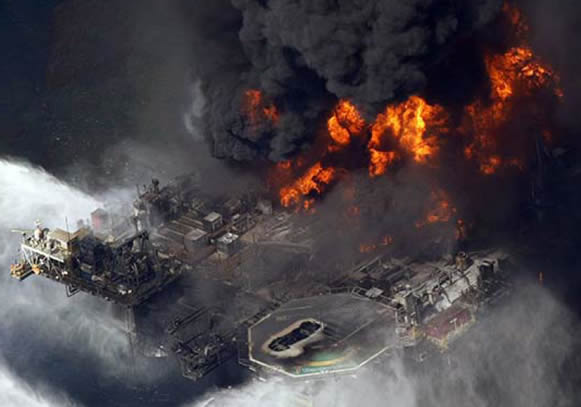
The well still is apparently flowing oil, which is appearing at the surface as a slick. They have been working with remotely operated vehicles, or ROV’s which are essentially tethered miniature submarines with manipulator arms and other equipment that can perform work underwater while the operator sits on a vessel. These are what were used to explore the Titanic, among other things. Every floating rig has one on board and they are in constant use. In this case, they are deploying ROV’s from dedicated service vessels. They have beentrying to close the well in using a specialized port on the BOP’s and a pumping arrangement on their ROV’s. They have been unsuccessful so far. Specialized pollution control vessels have been scrambled to start working the spill, skimming the oil up.
In the coming weeks they will move in at least one other rig to drill a fresh well that will intersect the blowing one at its pay zone. They will use technology that is capable of drilling from a floating rig, over 3 miles deep to an exact specific point in the earth – with a target radiusof just a few feet plus or minus. Once they intersect their target, a heavy fluid will be pumped that exceeds the formation’s pressure, thuscausing the flow to cease and rendering the well safe at last. It will take at least a couple of months to get this done, bringing all available technology to bear. It will be an ecological disaster if the well flows all of the while; Optimistically, it could bridge off downhole.